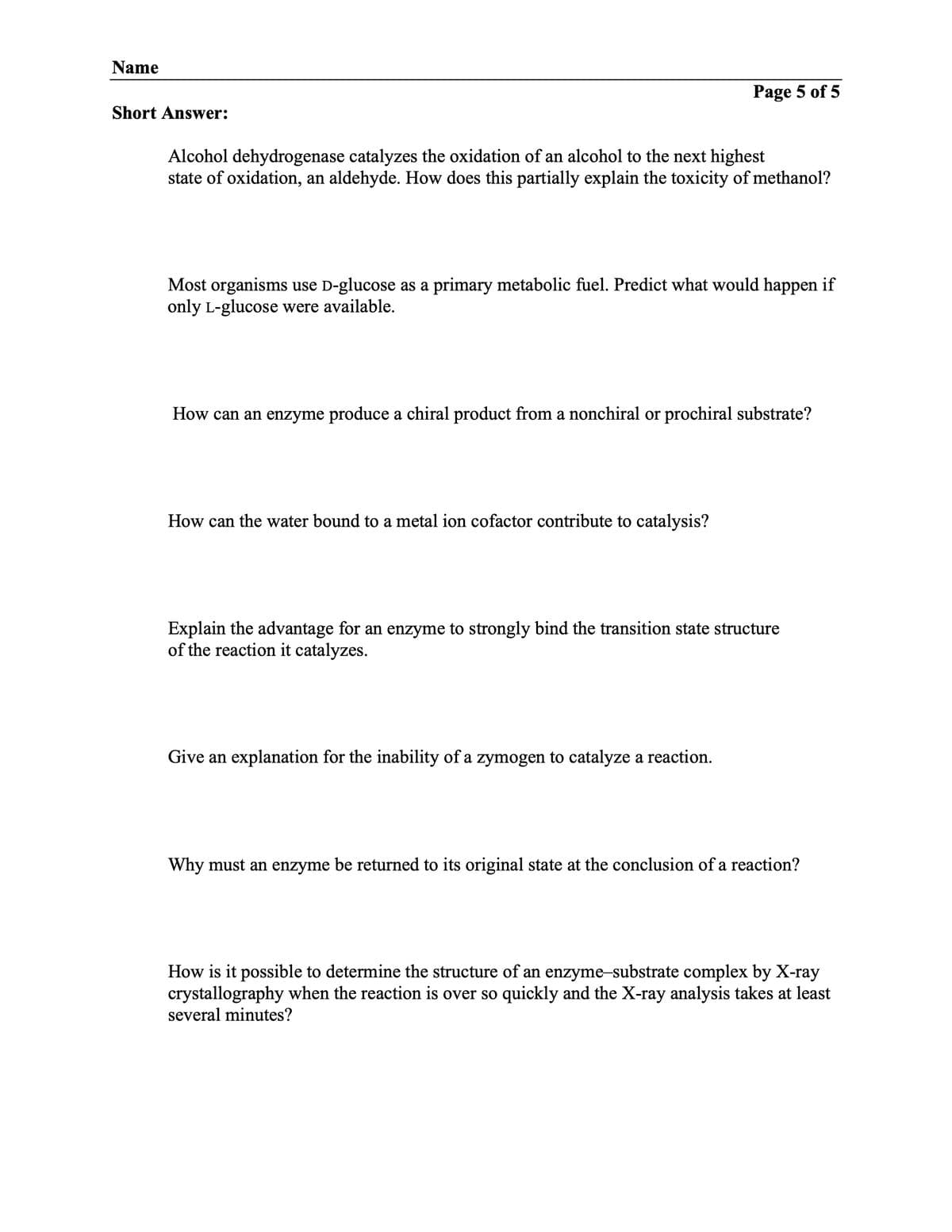Short Answer: Page 5 of 5 Alcohol dehydrogenase catalyzes the oxidation of an alcohol to the next highest state of oxidation, an aldehyde. How does this partially explain the toxicity of methanol? Most organisms use D-glucose as a primary metabolic fuel. Predict what would happen if only L-glucose were available.
Short Answer: Page 5 of 5 Alcohol dehydrogenase catalyzes the oxidation of an alcohol to the next highest state of oxidation, an aldehyde. How does this partially explain the toxicity of methanol? Most organisms use D-glucose as a primary metabolic fuel. Predict what would happen if only L-glucose were available.
Biochemistry
6th Edition
ISBN:9781305577206
Author:Reginald H. Garrett, Charles M. Grisham
Publisher:Reginald H. Garrett, Charles M. Grisham
Chapter17: Metabolism: An Overview
Section: Chapter Questions
Problem 14P
Related questions
Question

Transcribed Image Text:Name
Short Answer:
Alcohol dehydrogenase catalyzes the oxidation of an alcohol to the next highest
state of oxidation, an aldehyde. How does this partially explain the toxicity of methanol?
Page 5 of 5
Most organisms use D-glucose as a primary metabolic fuel. Predict what would happen if
only L-glucose were available.
How can an enzyme produce a chiral product from a nonchiral or prochiral substrate?
How can the water bound to a metal ion cofactor contribute to catalysis?
Explain the advantage for an enzyme to strongly bind the transition state structure
of the reaction it catalyzes.
Give an explanation for the inability of a zymogen to catalyze a reaction.
Why must an enzyme be returned to its original state at the conclusion of a reaction?
How is it possible to determine the structure of an enzyme-substrate complex by X-ray
crystallography when the reaction is over so quickly and the X-ray analysis takes at least
several minutes?
Expert Solution
This question has been solved!
Explore an expertly crafted, step-by-step solution for a thorough understanding of key concepts.
This is a popular solution!
Trending now
This is a popular solution!
Step by step
Solved in 3 steps with 2 images

Recommended textbooks for you

Biochemistry
Biochemistry
ISBN:
9781305577206
Author:
Reginald H. Garrett, Charles M. Grisham
Publisher:
Cengage Learning

Biochemistry
Biochemistry
ISBN:
9781305577206
Author:
Reginald H. Garrett, Charles M. Grisham
Publisher:
Cengage Learning